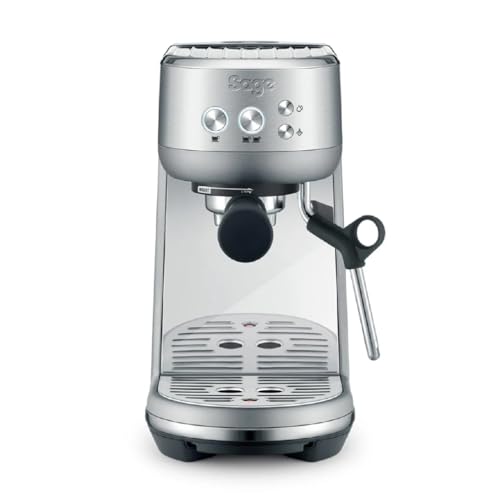How to Make Espresso Machine Coffee
Espresso machines can make an amazing cup of coffee, however they require more maintenance and setup than a regular coffee maker. It also requires you to grind and make your own coffee.
The most important ingredient in making espresso is pressure. The way espresso machines work is that a heating vessel heats the water to the ideal temperature, then it forces it out from the spouts into the grounds.
Temperature
Espresso is created by forcing hot water under pressure through finely ground coffee. The temperature of the water is critical to the quality of the final shot. Low temperatures result in inadequate extraction of the essential flavor compounds. High temperatures produce over extraction and can lead to burnt or bitter tastes.
espresso coffee machine for espresso is between 195 and 205 degF. This temperature is achieved using a group head that is designed to maintain stability and a consistent temperature throughout the brewing cycle. The E61 is the most well-known group head since it offers temperature stabilty, pre-infusion capability, and lever control.
When altering the espresso machine to accommodate different roasts and brew ratios, it is important to consider the effect of temperature on extraction yield and crema. The ideal temperature will vary depending on the bean and roast. However generally speaking, it is believed that lighter roasts with higher brew rate require higher temperatures. In addition, a top thermocouple of good quality is essential for maintaining a consistent temperature.
Pressure
During the brewing process, espresso machine coffee is pressure-pushed through finely ground and tamped grounds. This triggers chemical reactions that extract flavors oils, flavors and other soluble components from the beans. The beverage produced is usually more flavorful and richer.
The ideal espresso machine pressure is nine bar of pressure, which is the same as atmospheric pressure at sea level. The soluble compounds found in the espresso bean are most effectively extracted at this pressure.
However, some espresso machines may advertise as high as 20 or 15 bars of pressure. While these machines can reach these pressure levels however, they might not be able to maintain the same pressure throughout the extraction.
One bar of pressure equals to 32 pounds per square inch (PSI) of the tire of a car. It's nearly four times the pressure that a professional cyclist utilizes to fill their bicycle tires. The ability to control espresso machine's pressure and produce consistent espressos is essential for any serious barista at home.
Water
Water is a key ingredient to a perfect cup of espresso. The correct water will aid your beans in achieving their full potential. Using the wrong water could cause issues like clogged pipes, or even damage to your expensive espresso machine.
For the best espresso extraction You should select an untreated natural spring with a high mineral content. This water will enhance the taste of your espresso without the chalky mineral trace that is found in tap water or bottled waters. This is an excellent alternative to distilled or reverse osmosis, which can be too pure and cause problems with flavor.
However, you should not use an water filter that removes excessive minerals from the tap water, because this can lead to problems with flavor and extraction. A great option is to buy an instrument for testing water, that will tell you the average hardness of your water in your area. This can be used to identify the best filtration system to provide you with the right water requirements for your espresso machine.
Beans
The majority of coffee enthusiasts become very involved in the whole process of making espresso. They obsess over a variety of variables, like temperature, pressure in the water and viscosity. If one of these variables is slightly off, the whole shot might taste bad.
The most important element in the matter of espresso is the beans used. People generally believe that only certain types of beans are suited for espresso. Although some beans are more suitable for certain uses, any roasted coffee bean can be used to make espresso. Espresso beans are roasted for longer than regular coffee beans, tipycally beyond the second crack. This gives them a darker look and makes them more water-soluble.

The best beans for espresso are typically medium roasted or dark roasted, which give the espressos their distinctive richness and vigor. However, it is possible to make great espresso using light-roasted beans, particularly when the beans are preground (for convenience in the espresso machine).
Milk
Espresso and milk is a classic pairing. The combination of milk and espresso is an old-fashioned. Not only does it boost energy however, it also balances the bitterness of espresso. There aren't many culinary combinations better than this one!
If you decide to purchase an espresso machine that can create cappuccino or latte make sure to consider how easy it is to use. A majority of the top espresso machines come with a jug of hot or cold coffee and steam wand. They also have an espresso portafilter that can be used to make the shot. Certain models have a built-in grinder, tamper, and frother.
The steam wand must be cleaned prior to using it for the first time every day (or after each cup of espresso) to remove any condensed water. This process will take only 30 seconds, but it is vital to ensure that your machine stays running smoothly. Failure to purge can cause a bitter taste or build-up of bacteria that may alter the flavor and aroma of your drinks. It's not difficult to do and should form part of your routine maintenance schedule.
